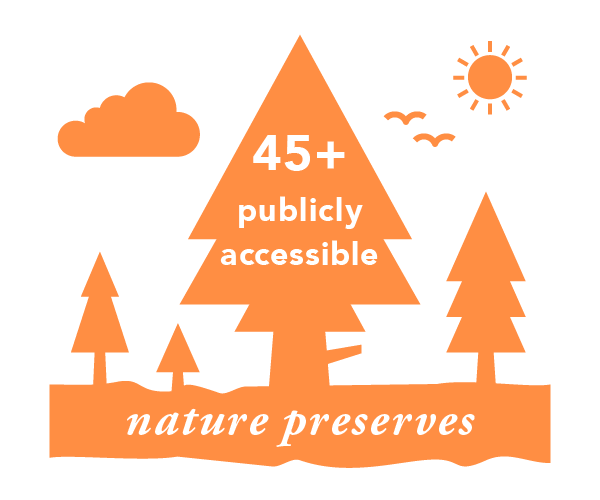The Finger Lakes Land Trust today released a report highlighting both the threat of toxic algae and sprawling development on the region’s land and water resources and calling for an investment of $100 million over the next decade to address these threats. See the report.
Lakes, Farms, & Forests Forever is the title of the Land Trust’s report, which is based on a year-long comprehensive assessment of the region’s natural resources coupled with input from 40 non-profit organizations, county and regional planning departments, and government conservation agencies.
The report highlights ten priority conservation strategies for the region, emphasizing the need to address both excessive nutrient runoff into the region’s lakes and sprawling rural development that threatens farmland, vistas, water quality, and recreational resources.
Toxic Algae
“The incidence of toxic algae outbreaks that threaten public drinking water supplies is increasing and is a particular cause for concern,” said Wade Sarkis, President of the Canandaigua Lake Watershed Association. “Excessive nutrient runoff is a big part of the problem. If we don’t address this issue, we risk harming our public drinking water supplies and negatively impacting the region’s $2 billion tourism economy.”
The Land Trust recommends launching a new region-wide effort to purchase perpetual stream buffers from farmers and also restore and construct wetlands that can filter out runoff before it reaches the lake. The organization further advocates for resumption of a program to purchase conservation easements within the watershed of Skaneateles Lake – the unfiltered drinking water supply for the City of Syracuse.
Sprawling Development
To address the rural sprawl threatening to degrade the region’s famous scenery, the Land Trust calls for increased funding for New York State’s existing farmland protection program as well as the implementation of a program to identify and conserve the highest quality vistas found along the region’s state highways and two, state-designated Scenic Byways.
“All around Seneca Lake, the threat of sprawling rural development is real,” remarked Marti Macinski, co-owner of Standing Stone Vineyards and a Land Trust board member. “The decisions we make today on what lands to protect, and what lands to develop, will have lasting implications. We must act now if we are going to save our best farmland and beautiful lake views.”
Outdoor Recreation
To expand opportunities for outdoor recreation, the report calls for linking existing public lands in four focus areas as well as enhancing public access and interpretation of these areas. Public lands in the vicinity of the south ends of Canandaigua Lake and Skaneateles Lake are priorities, as well as the Emerald Necklace (a greenbelt extending around Ithaca), and a stretch of the Chemung River between Elmira and Corning.
Public and Private Resources
The Land Trust calls for a commitment of both public and private resources to address the identified needs. “The region truly stands at a crossroads,” says the organization’s Executive Director Andrew Zepp. “While this may seem like an extraordinary investment to some people, there will be a greater public cost in the long run if we fail to act now.”
With the release of the report complete, the Land Trust will now focus on reaching out to a variety of partners from the public and private sectors to explore how to most effectively implement the report’s ten recommendations. The report, along with additional supporting materials including a breakdown of funding recommendations (PDF), may be found at fllt.org/top10.
The Finger Lakes Land Trust is grateful to have received funding for this report from New York’s Environmental Protection Fund and the New York State Conservation Partnership Program, administered by the Land Trust Alliance. Additional funding came from members of the Finger Lakes Land Trust.
About the Finger Lakes Land Trust
By working cooperatively with landowners and local communities, the Finger Lakes Land Trust has protected nearly 20,000 acres of our region’s undeveloped lakeshore, rugged gorges, rolling forest, and scenic farmland. The Land Trust owns and manages a network of nature preserves that are open to the public and holds over 120 conservation easements that protect lands remaining in private ownership.
The Land Trust focuses on protecting critical habitat and lands that are important for water quality, connecting conserved lands, and keeping prime farmland in agriculture. The organization also provides programs to educate local governments, landowners, and local residents about conservation and the region’s unique natural resources.


